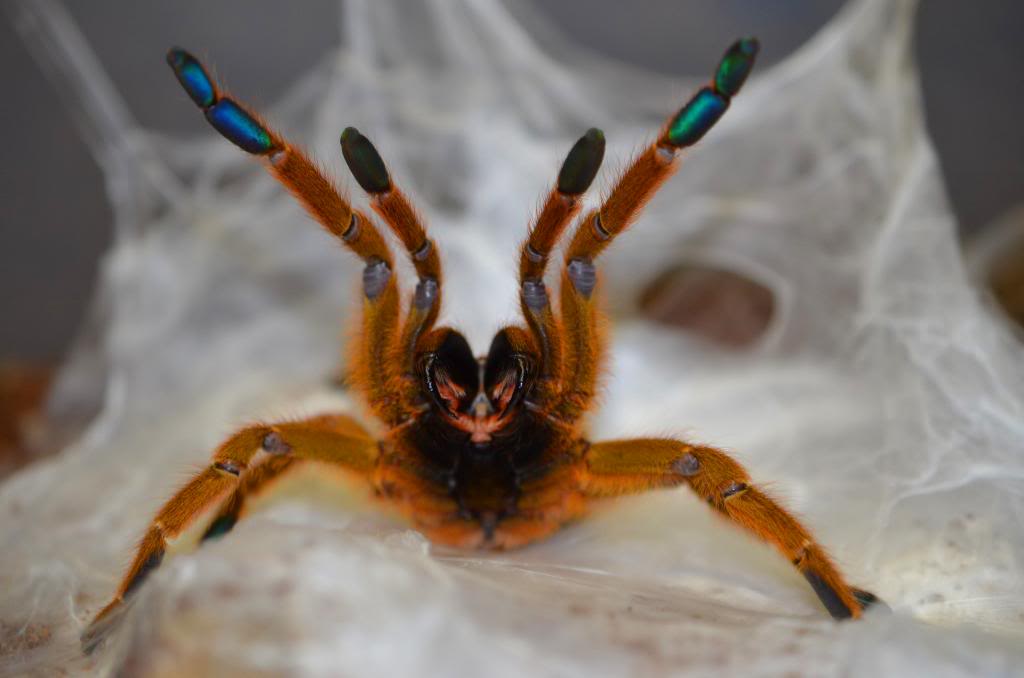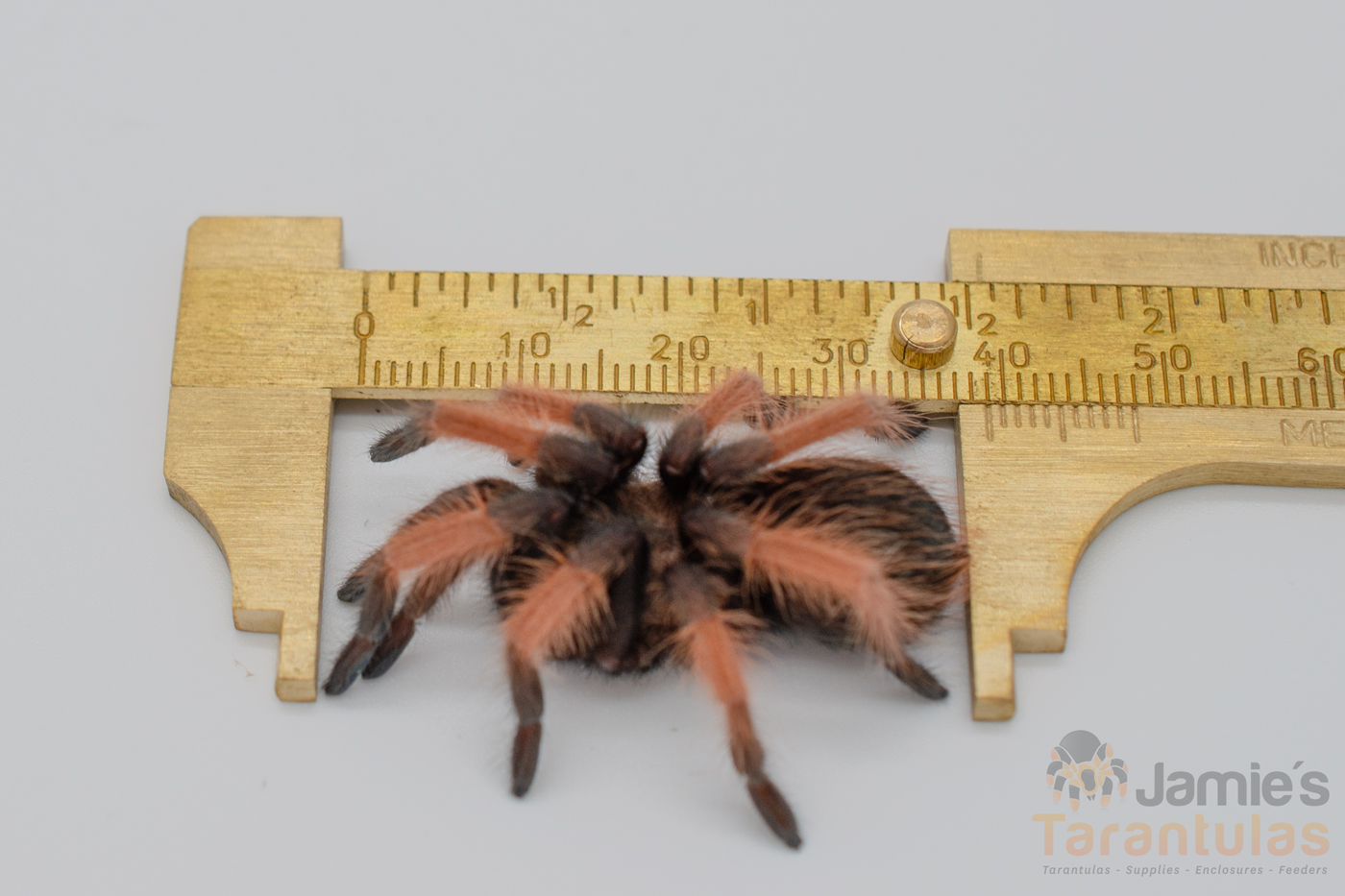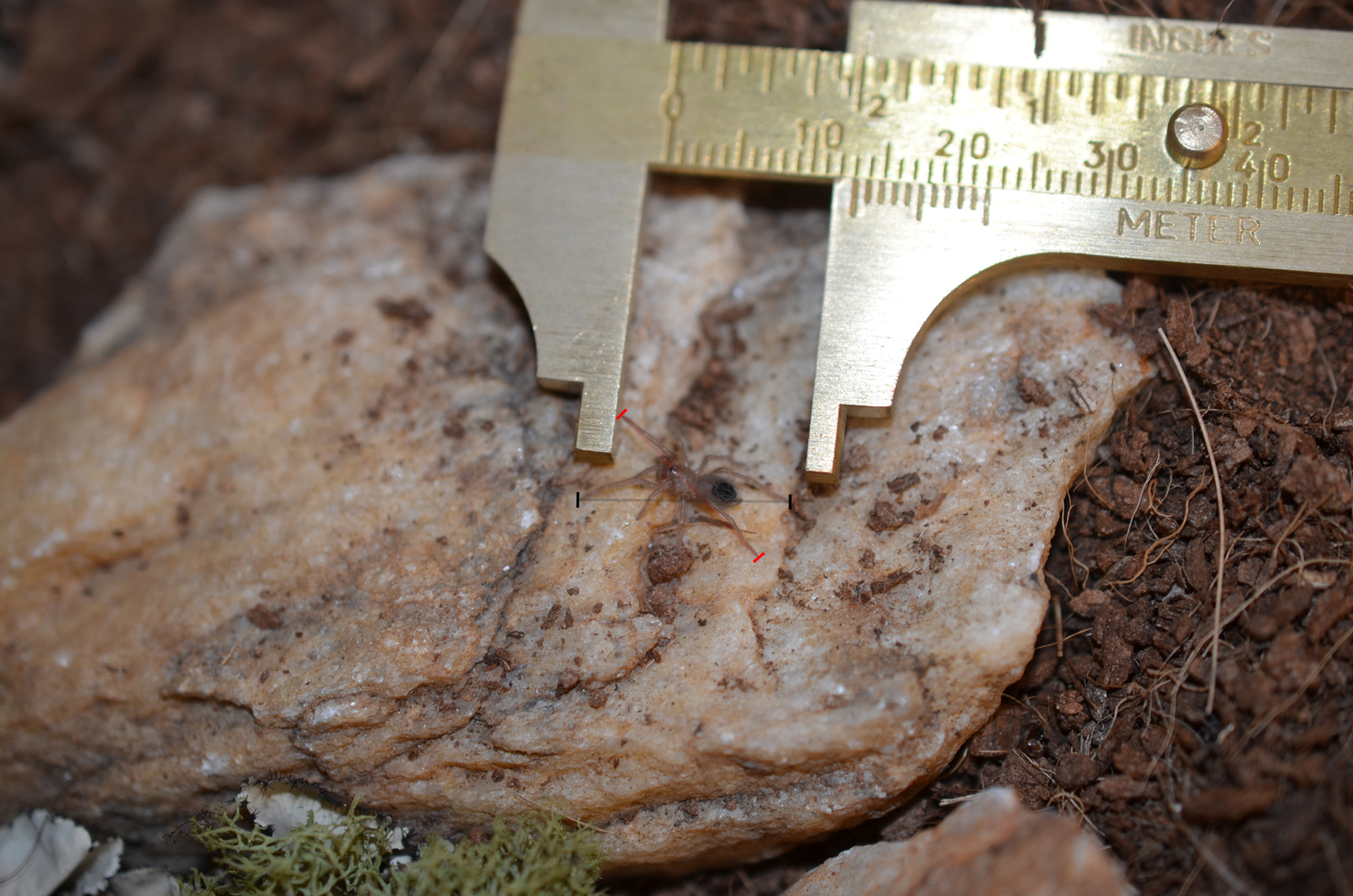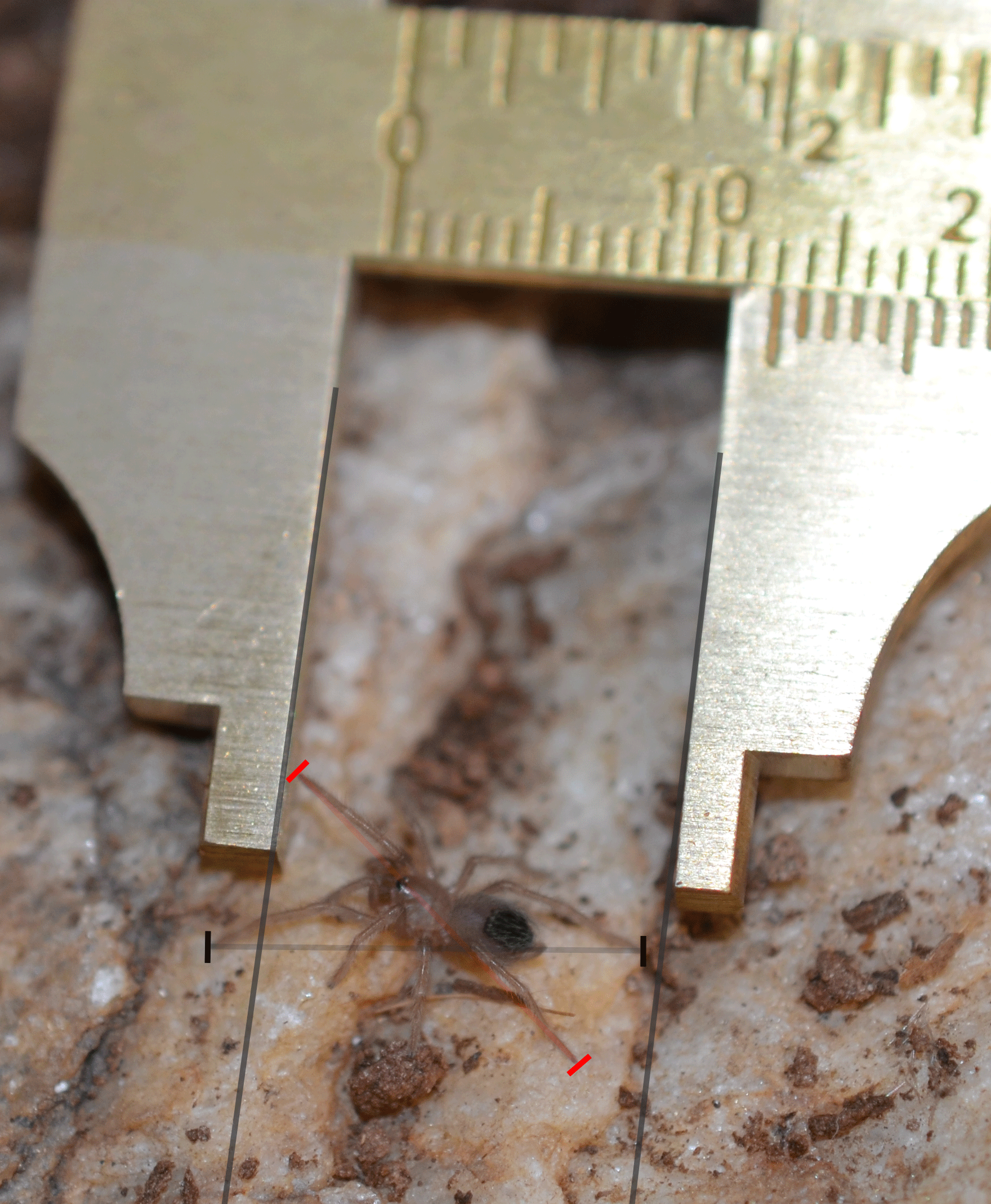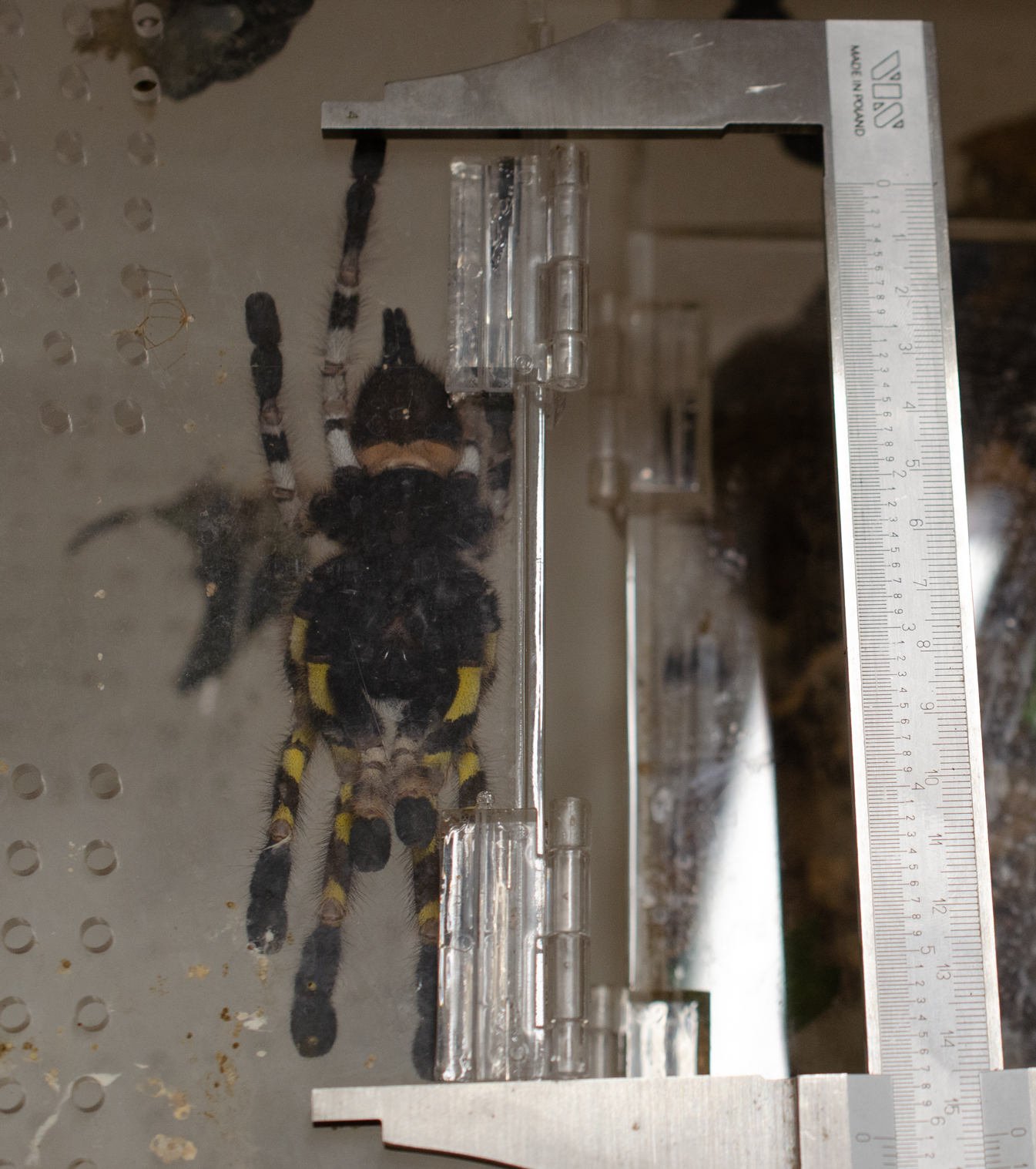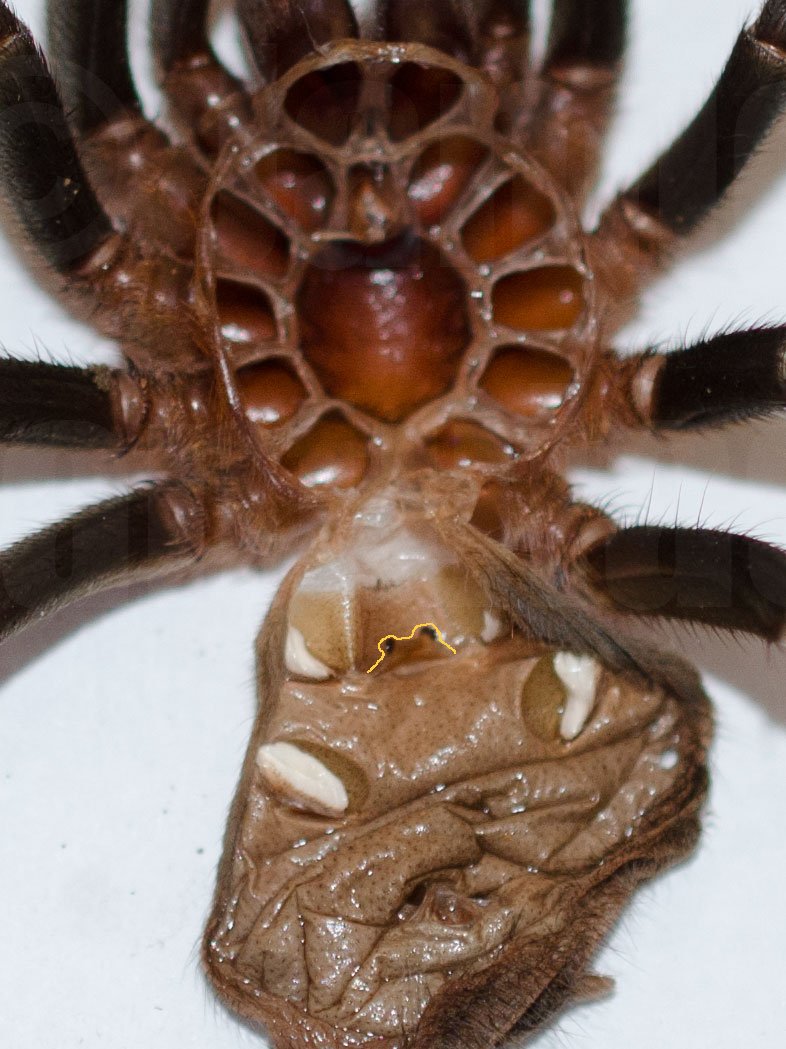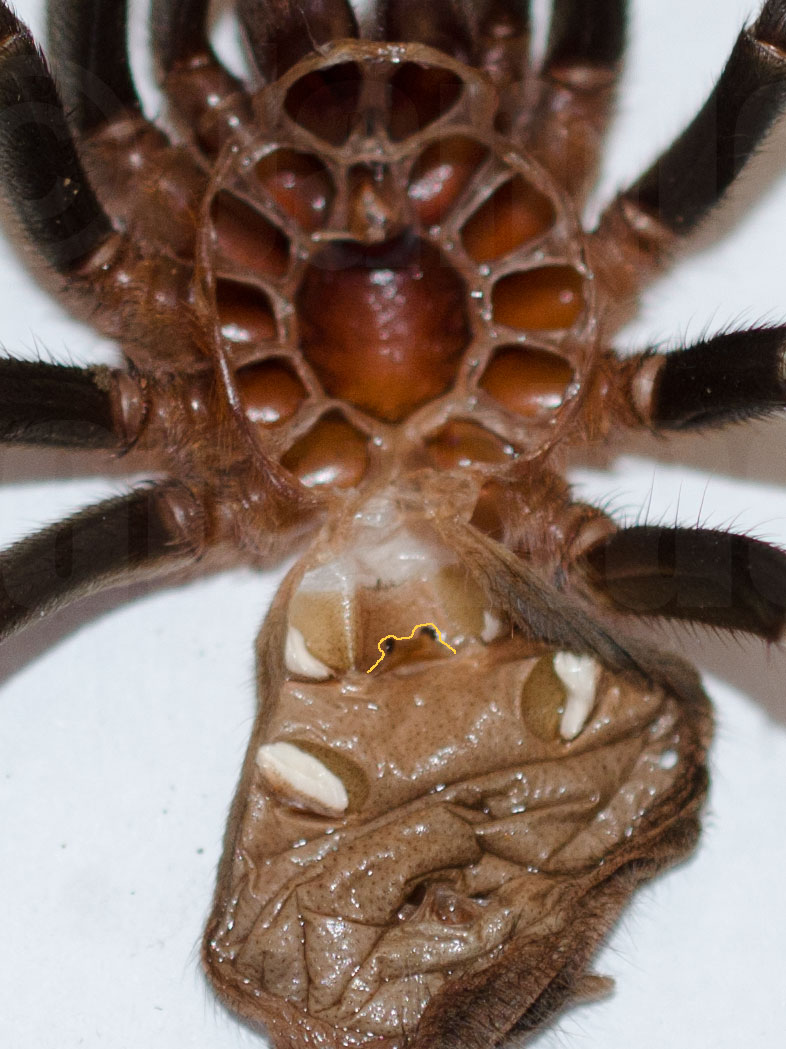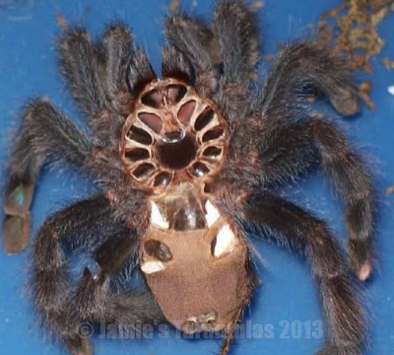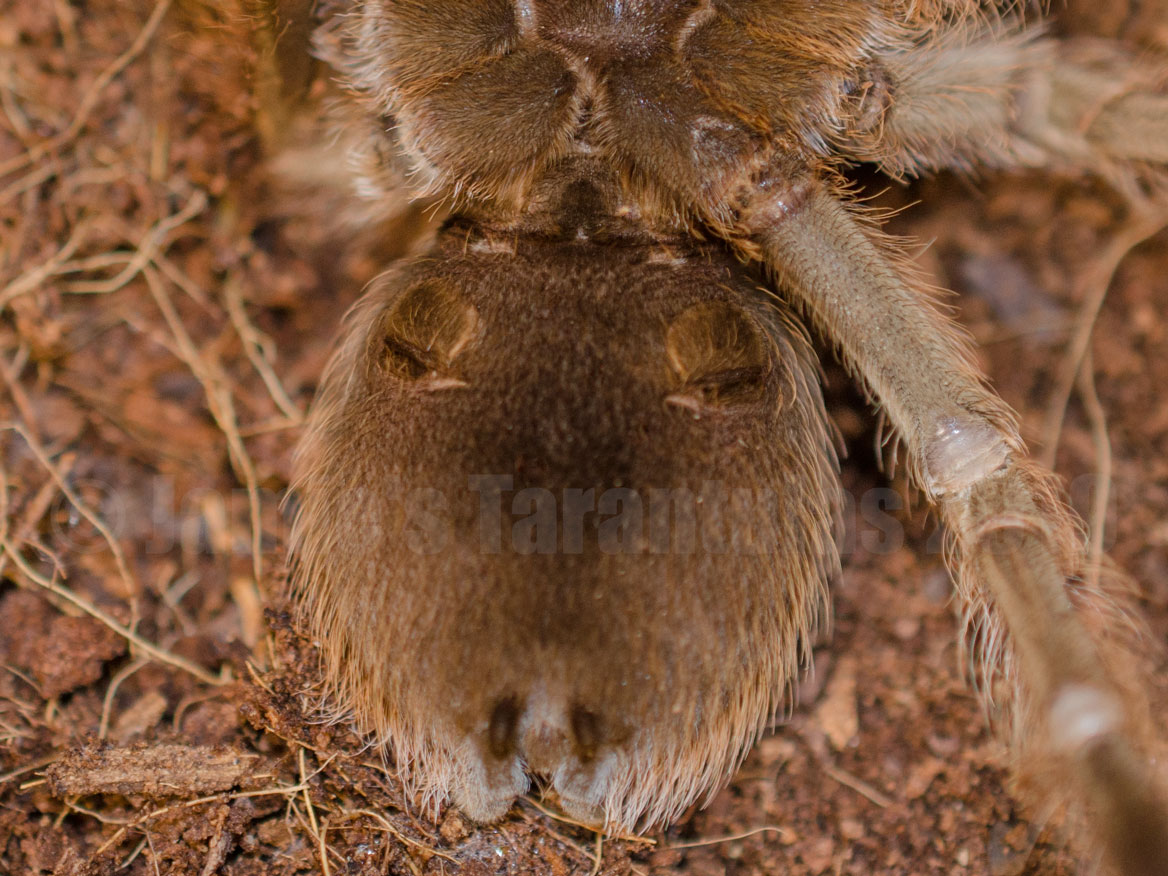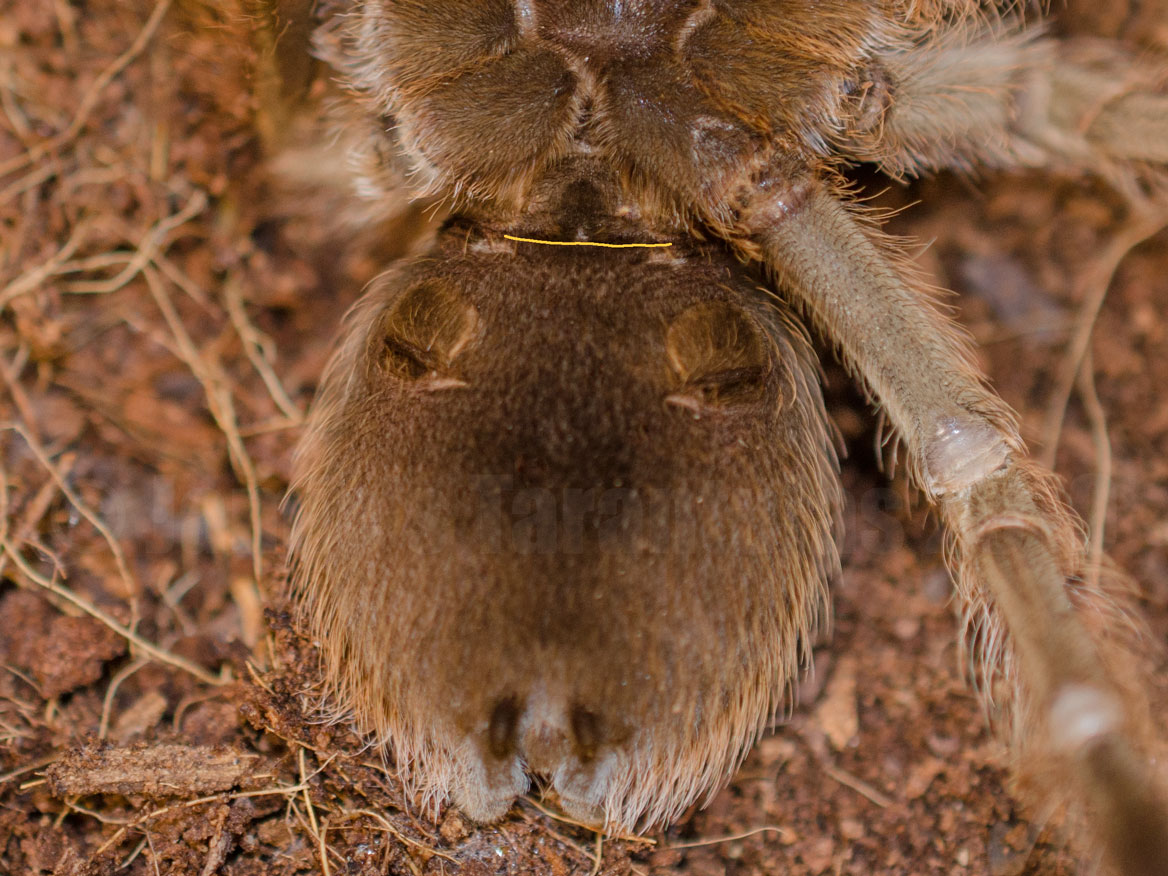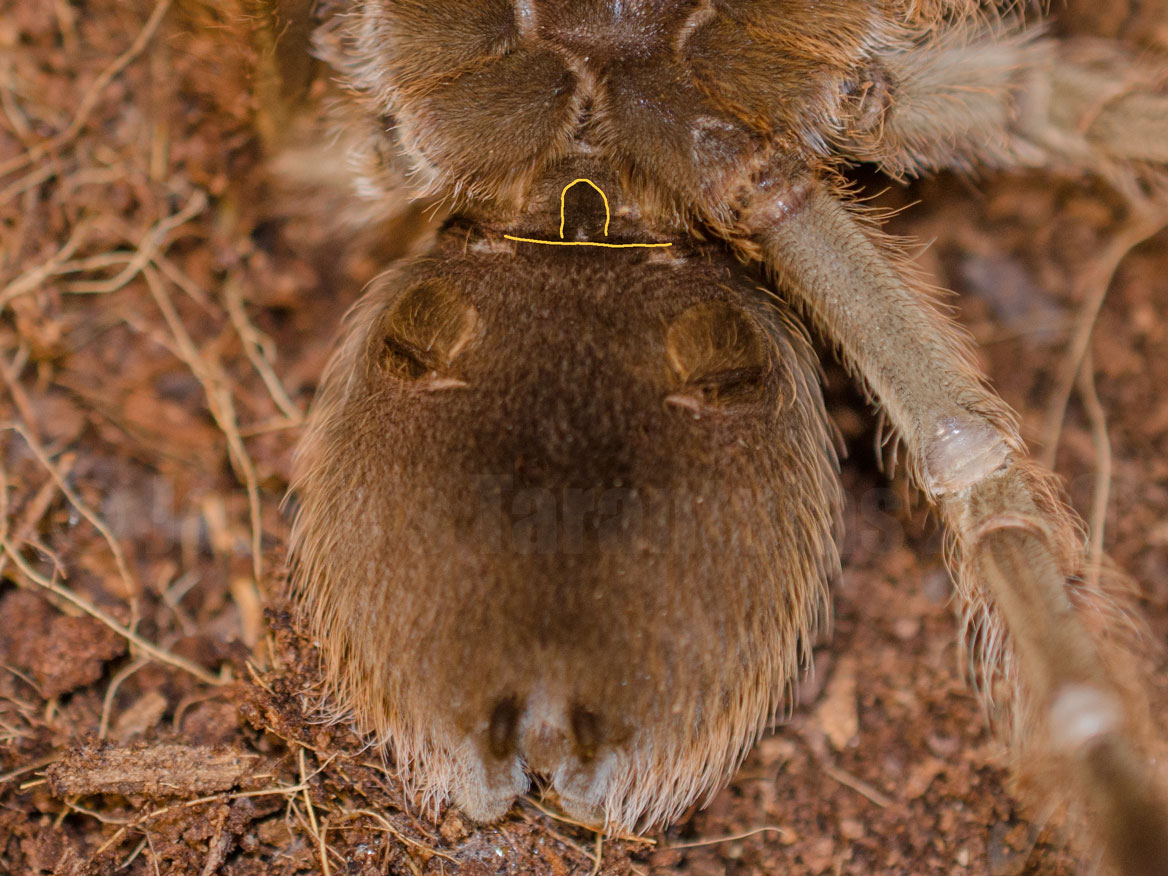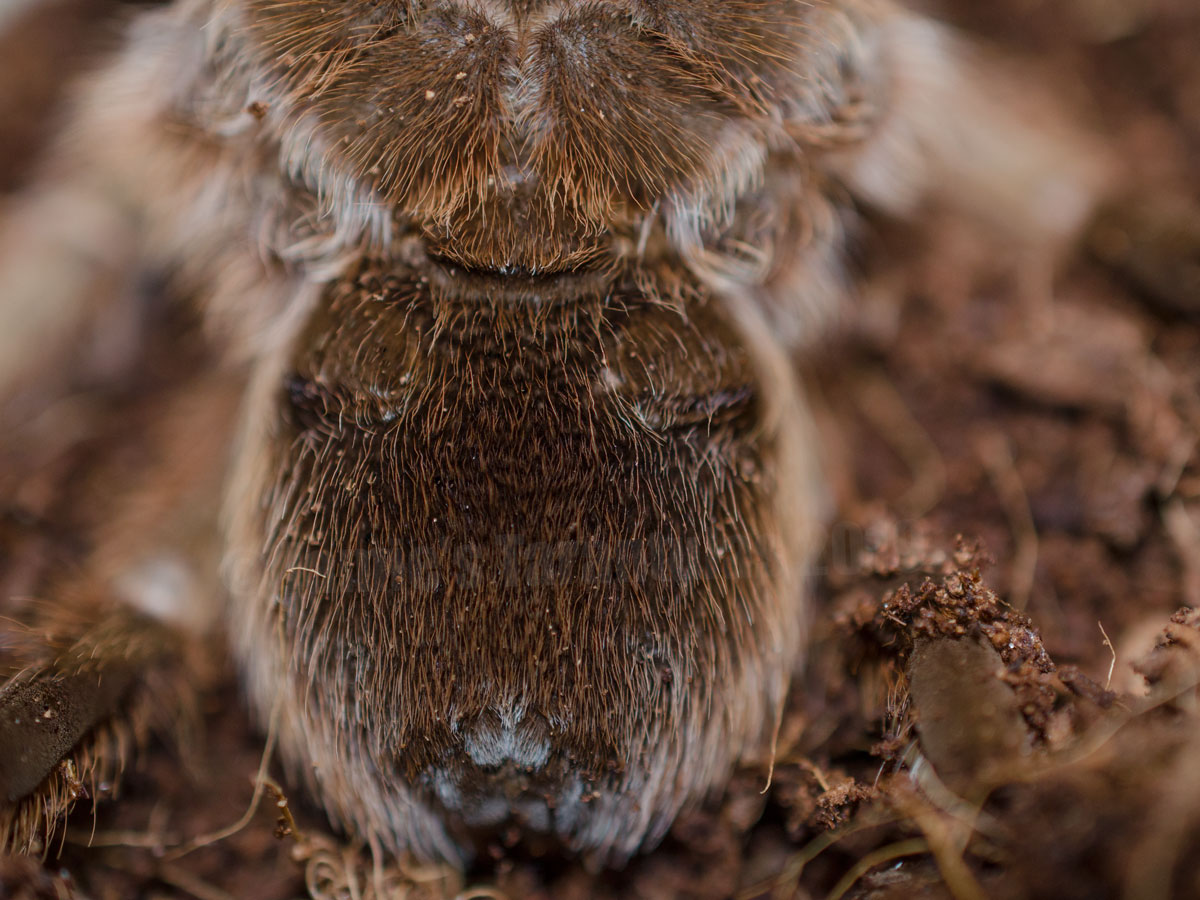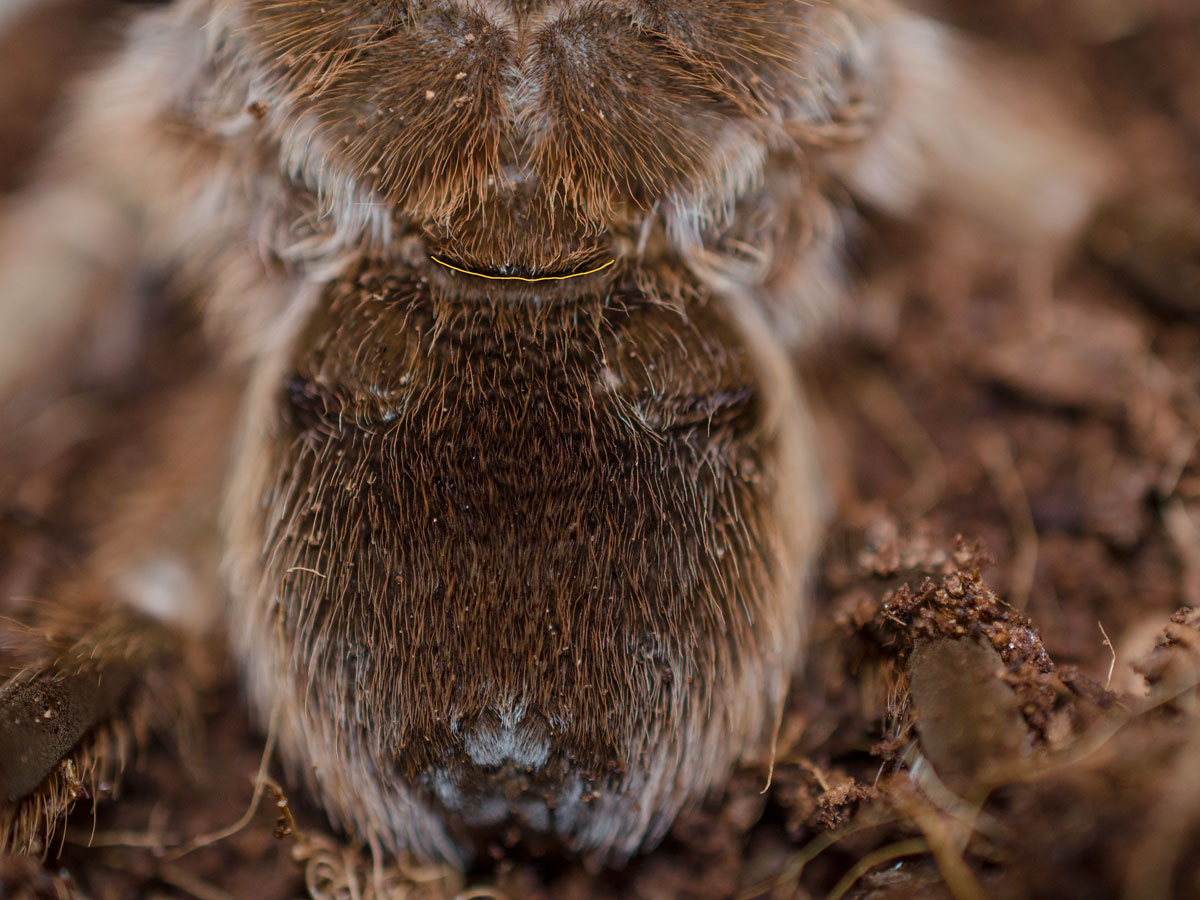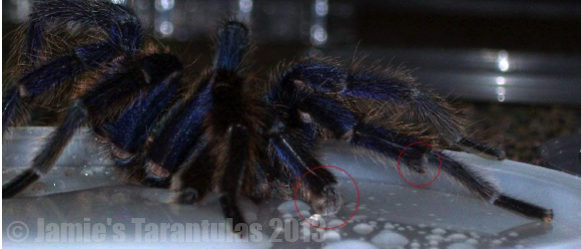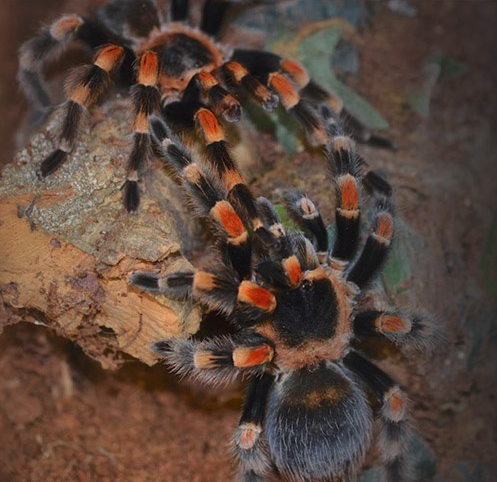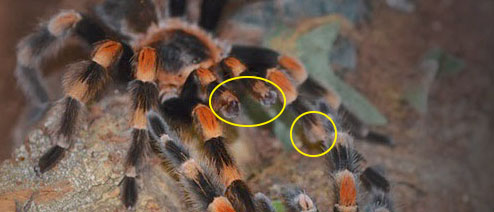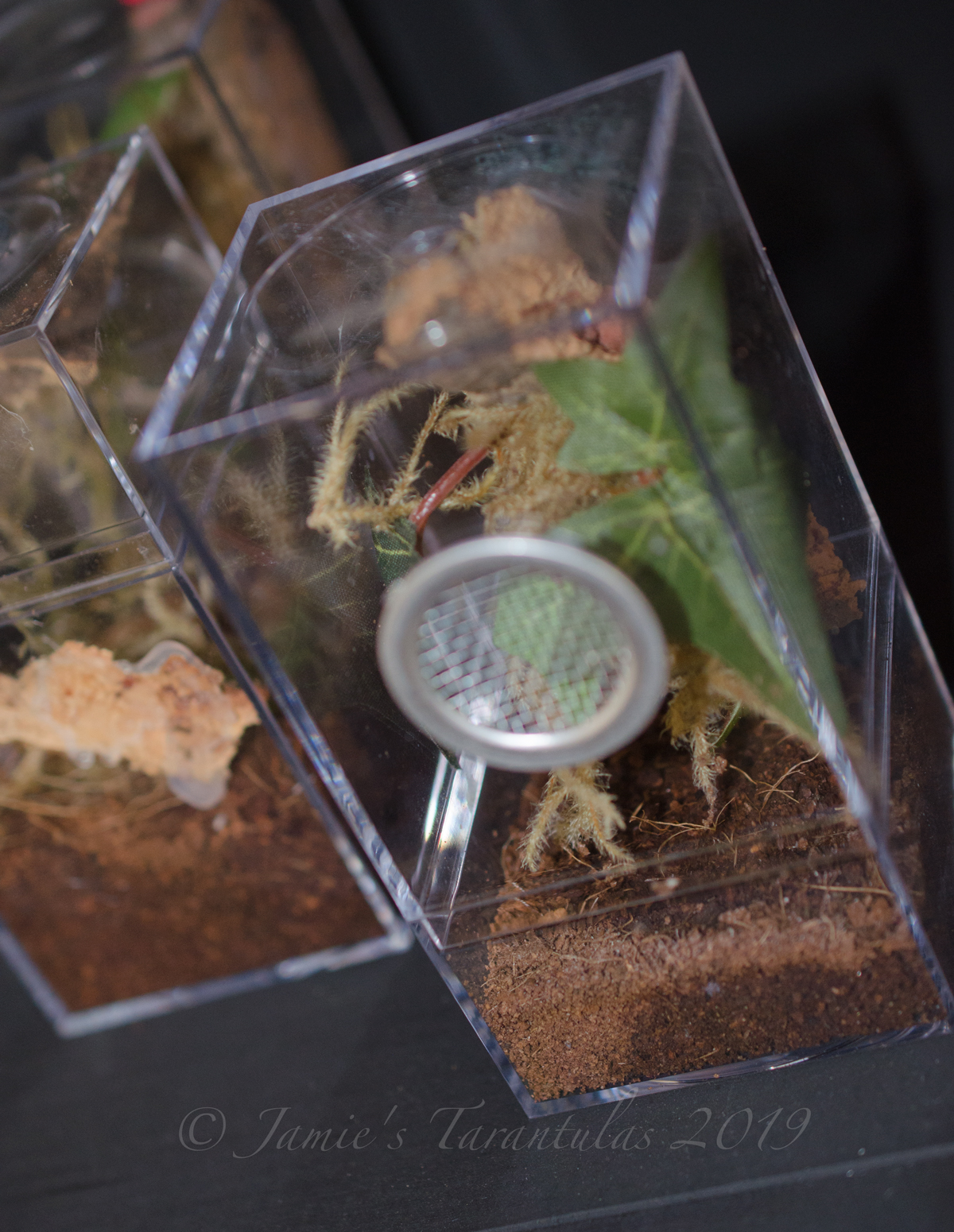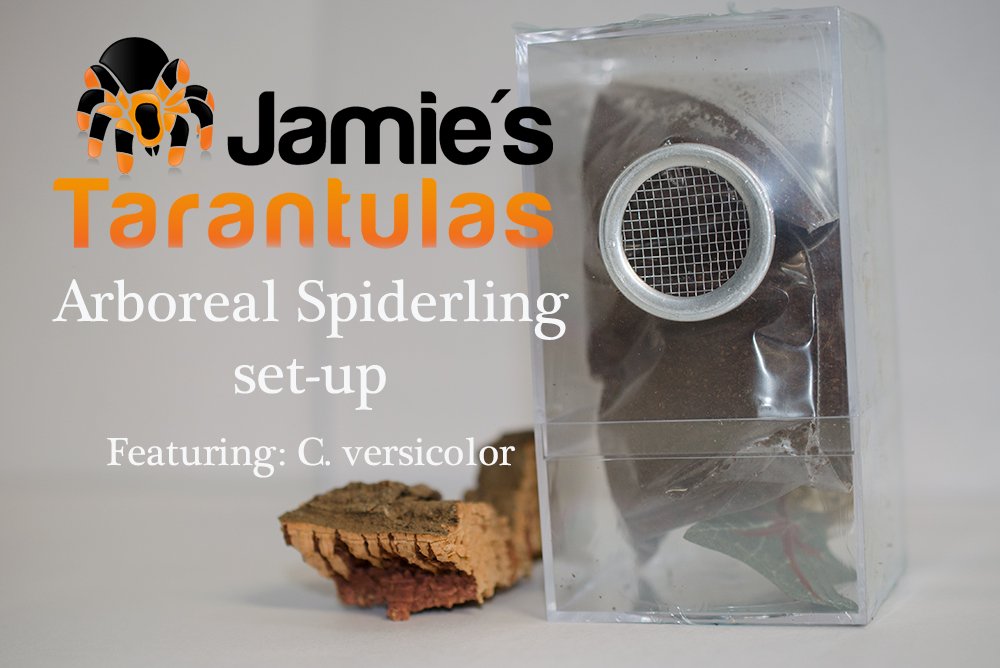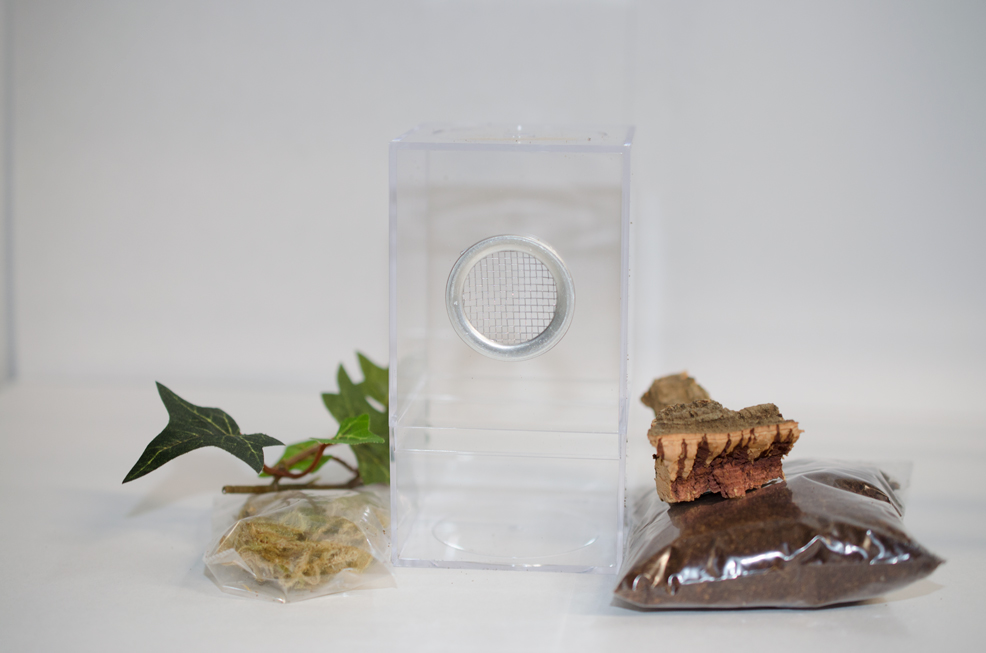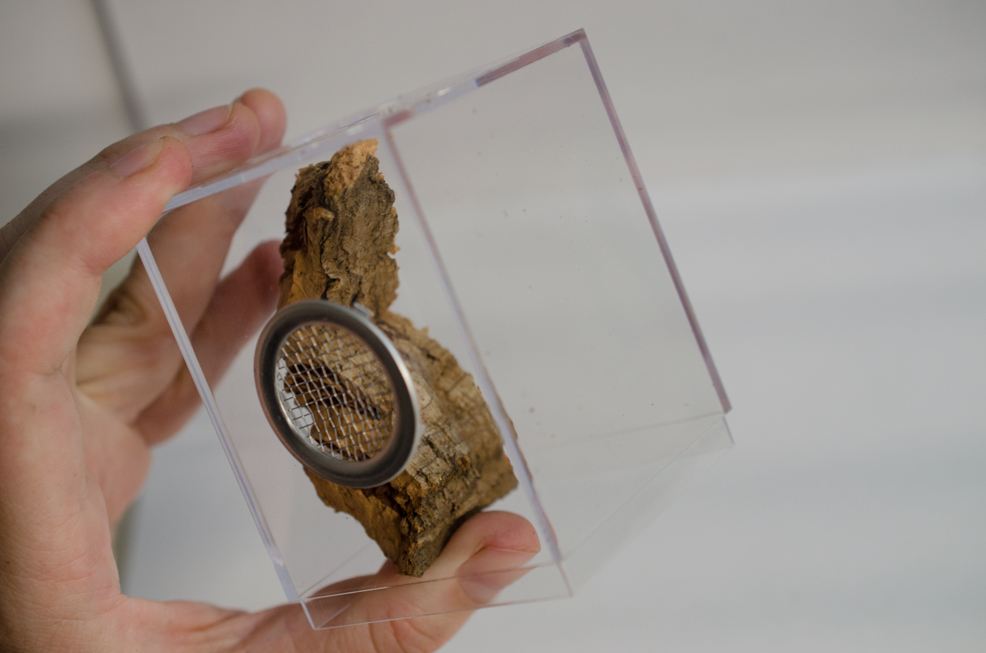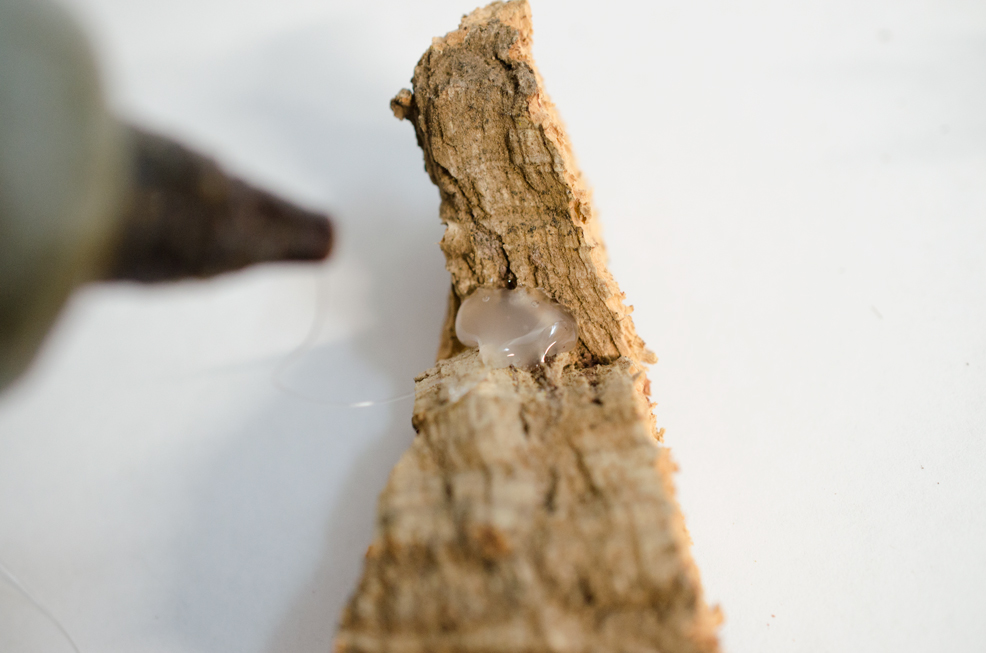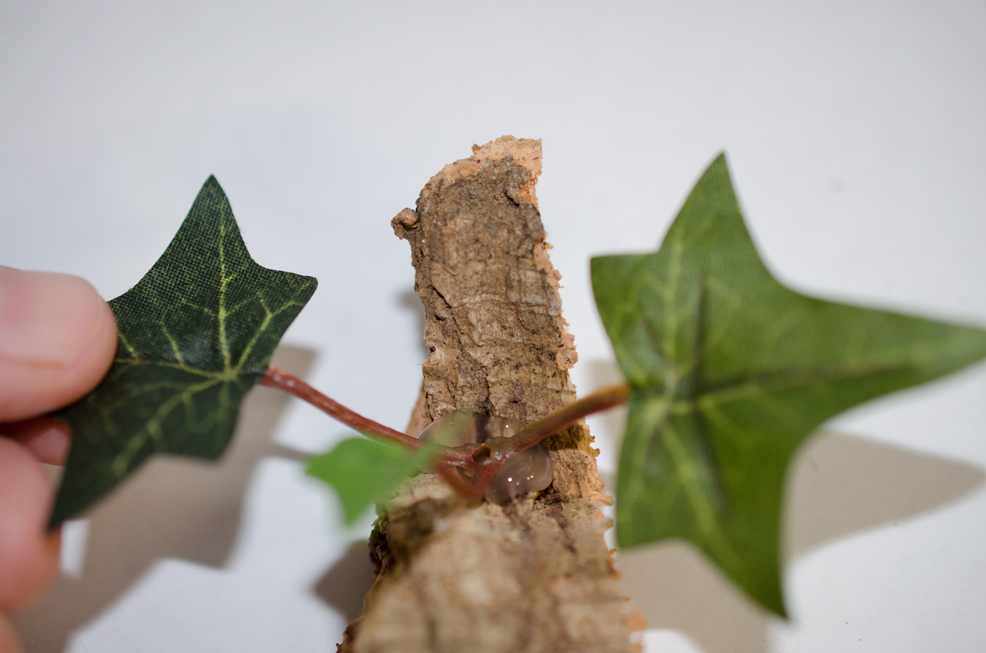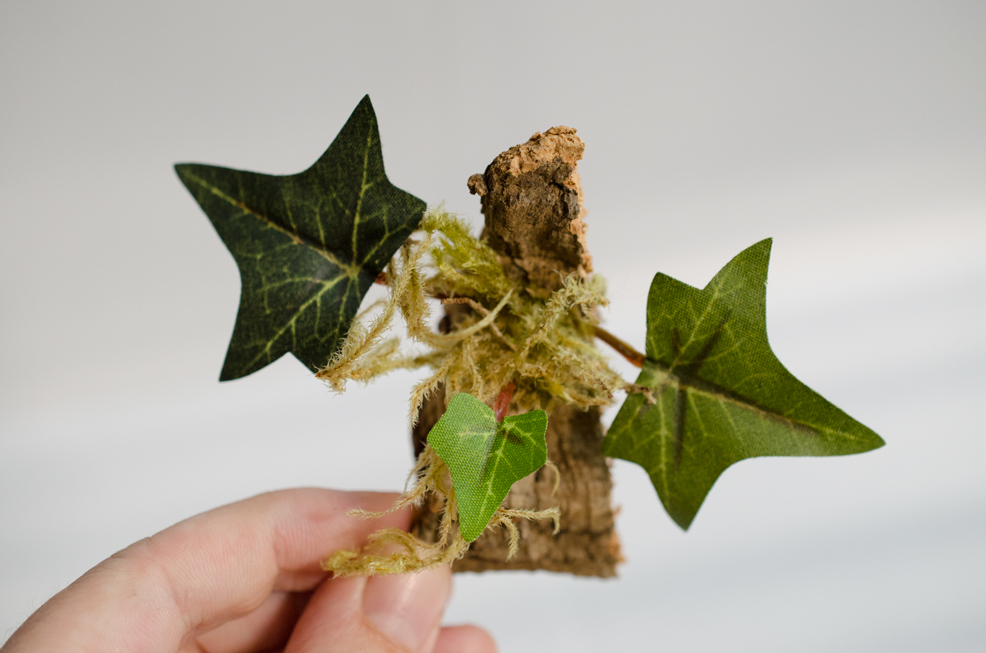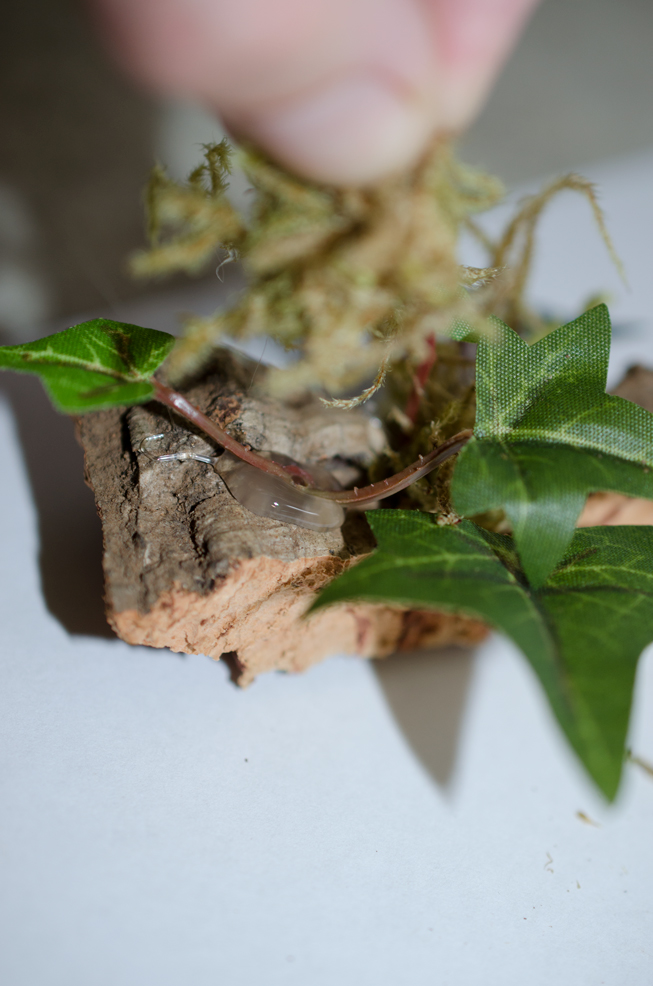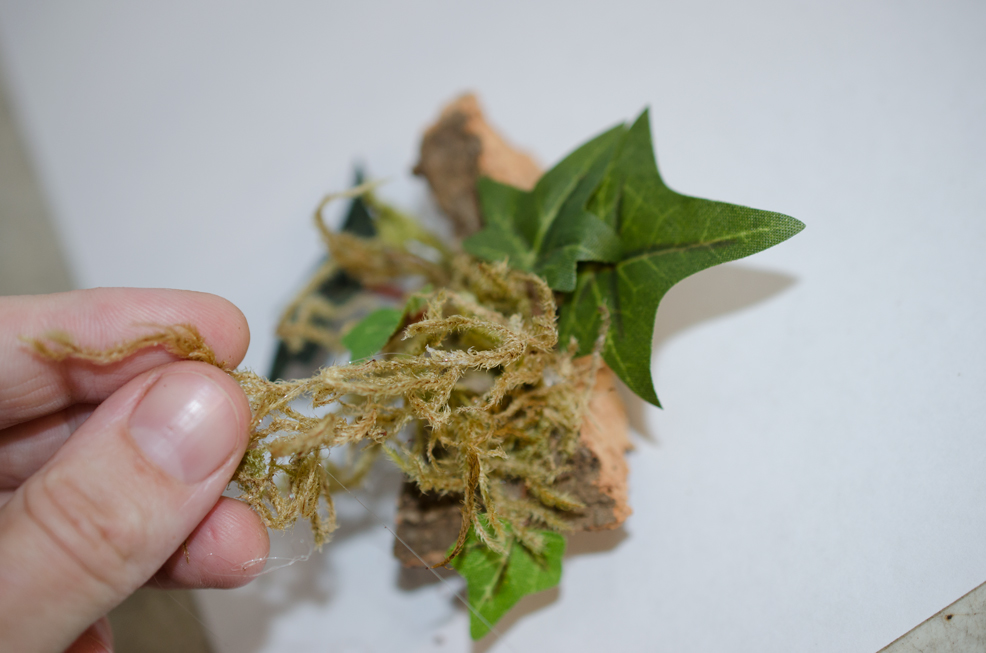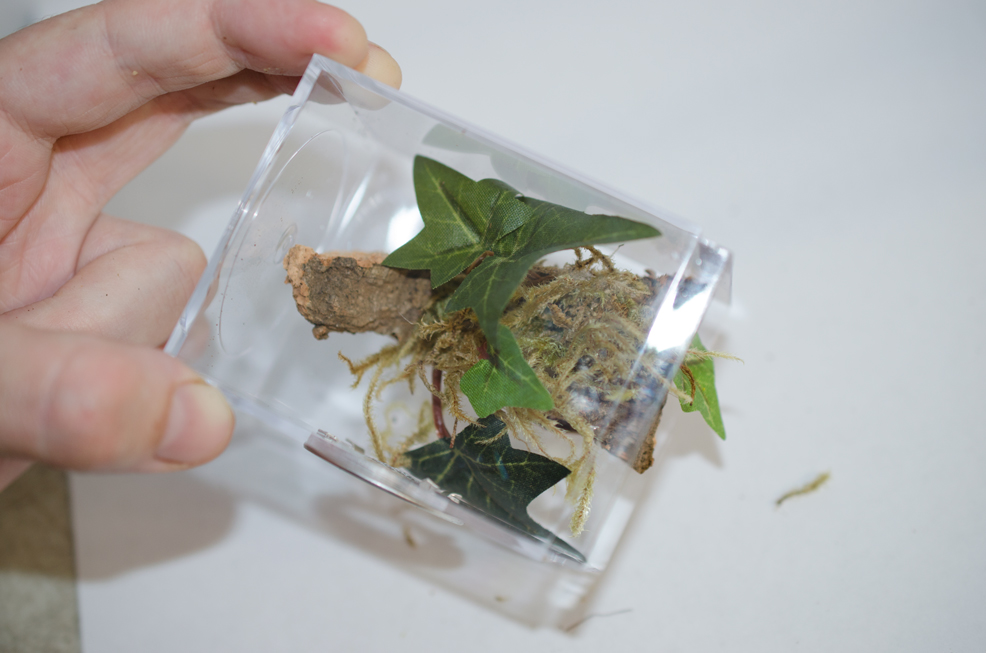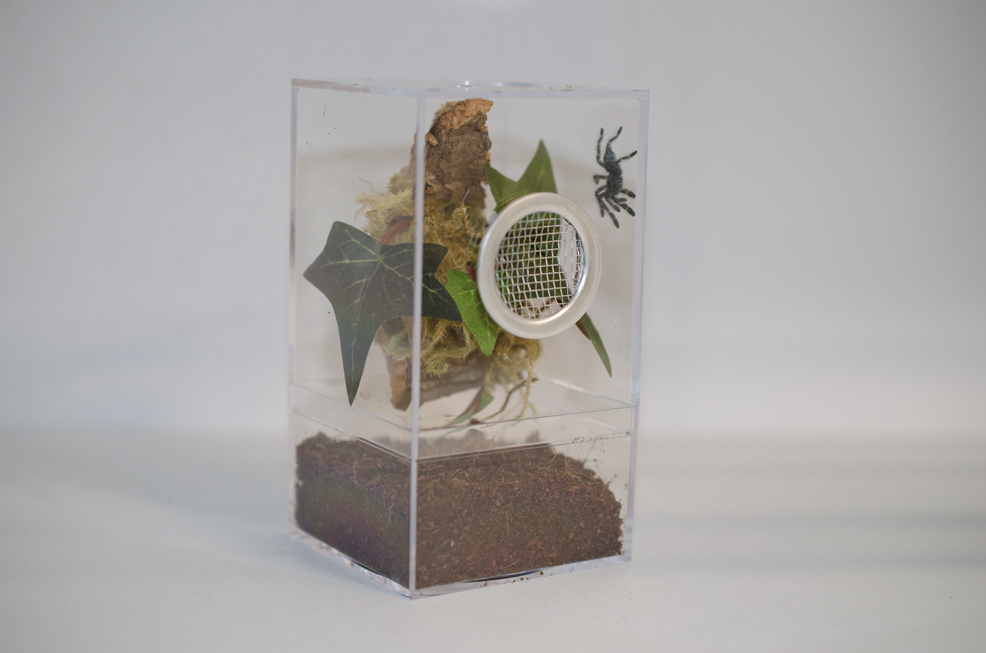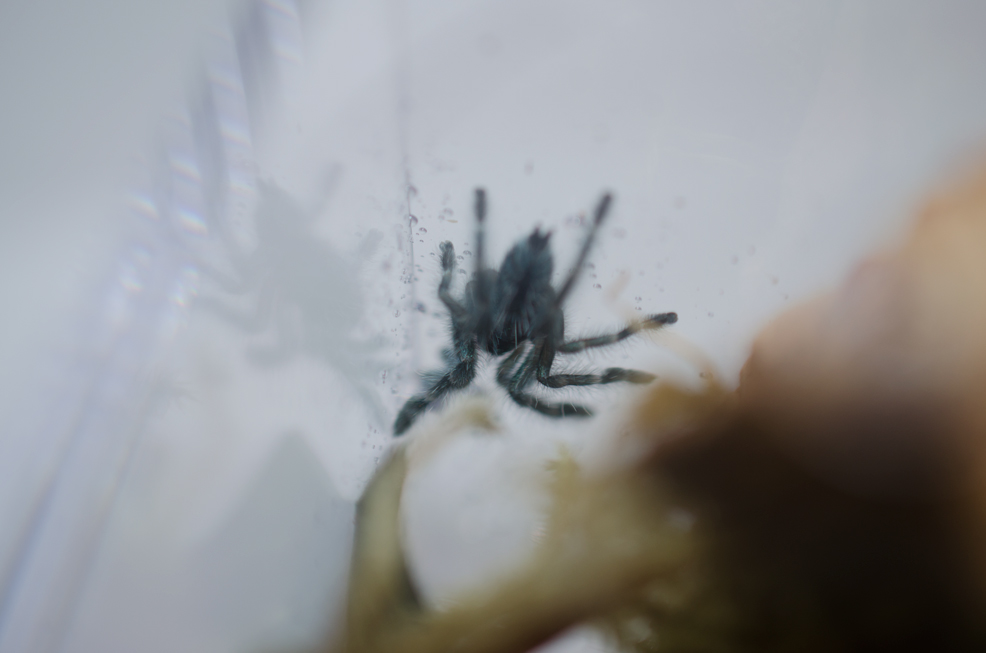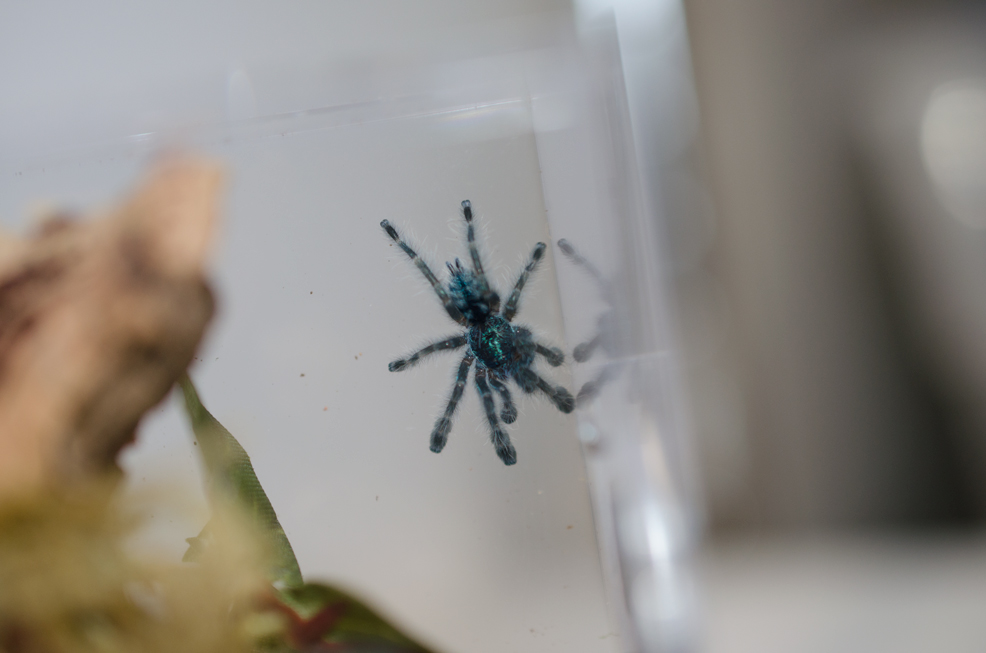#1 Tarantulas need time to “settle in”
The first week in its new home is an important adjustment period that cannot be ignored or overlooked. Often the hardest thing for beginners is allowing the tarantula time to settle in. I can understand the excitement of a new pet and the equally intense disappointment when the new pet doesn’t eat right out of the box or soon after arrival. A basic understanding of the tarantulas needs can make both a happy tarantula and a happy keeper.
Keep in mind under normal circumstances my collection eats only once weekly. If something is going on such as a molt or while settling into a new home the tarantula will often take longer before it is ready for a meal.
Do not offer prey immediately upon arrival (if you have already remove all feeders asap) and leave the tarantula alone in a quiet place ideally with low to no light 69-74 degrees. Make sure the tarantula has water in the meantime offered in a shallow wide bowl and/or via misting.
Why won’t it eat? Isn’t it hungry after the trip?
I know the first thing I want to do after getting off an airplane is to gorge myself on some real food, but let’s try to look it from the tarantulas perspective. Keep in mind tarantula has spent most of its life in the same home. The other day it was wrapped in paper towels, put in a vial or cup, bounced around on a truck, a plane, now it’s somewhere completely new. It doesn’t know where it is or how to get home. It feels exposed and vulnerable to attack.
The tarantulas eyes are sensitive enough only to distinguish light and dark. Gradually the tarantula will begin to explore its new surroundings, laying web as it goes. It will use its webs to “feel” its way around the enclosure. If the tarantula is kept quiet and content during the time after arrival it should quickly discover although it can’t get back to where it was before this is a nice, safe place to make a new home. It’s quiet, not too bright and there aren’t other beings or bugs already making their home here that might become a threat.
It will the begin to move substrate (terrestrials) and/or make tube webs. Some might even adopt a hide. Once it makes itself “at home” and it looks hungry then try offering a meal.
You will know Tarantula is hungry because it will typically hang out near the entrance of its home, waiting to pounce on something that wanders too close.
Typically tarantulas won’t eat until they have settled in. This process will take on average about a week sometimes less or more depending on the specific tarantula, age etc.
#2 Feeding
It is important the tarantula receive property-sized feeders. If the prey is too small the tarantula might have a hard time. If the feeders are too large the tarantula will not be able to eat the prey. This can cause great stress and possibly harm to the tarantula.
Ideally, the length of the prey item should be no longer than the spiderlings body length. As tarantulas grow the prey we give them relative to their size will decrease. For adult tarantulas feed prey the same size or smaller than the length of the adults’ carapace. This “rule of thumb” is a basic reference we use to help beginner keepers select feeders their tarantula can easily overpower, although some tarantulas might take larger prey we recommend first starting small.
We do out best to put feeder recommendations in the description of every tarantula we sell. If you have any questions please contact us before ordering!
Ideally the new tarantula should eat what they’re used to eating. If introduced to a new prey item it can take a little longer for the tarantula to accept food but as long as the feeders are the proper size/type the tarantula will eventually get hungry enough to try something new.
Healthy tarantulas do not eat daily as most mammals do and will often refuse meals for long periods. This is considered normal behavior.
As a basic rule of thumb for 95% of my collection, I feed on a one week rotation. That means everyone gets fed maximum once weekly. I will often skip tarantula for one or even two or more weeks if they are gaining weight too quickly, aren’t hungry or look like they’re in pre-molt. Remember, if the tarantula doesn’t eat the prey in 12-24 hours remove the feeder item and try again in another 3-6 days. If it’s molting wait until it’s finished and all hardened up!
If the tarantula has been consistently shy and/or not eating, even after waiting days to a week or more (depending on species), seemingly healthy and not molting; try offering a pre-killed feeder. It might be enough to boost the tarantulas energy as well as it’s confidence in this new, strange location.
Make sure your feeders are from a verified source. Never feed your tarantula wild caught food!
For more detailed information on feeding please visit:
https://jamiestarantulas.com/guides/
#3 Misting & Water
The substrate should be subtly moist (somewhat dependent on the species) and the trantula should have “dew” to drink off the sides on the enclosure a few times a week. There is a bit of a learning curve when it comes to misting. We recommend new keepers mist one corner of the enclosure. This way the tarantula can choose between moist and dry substrate and the new keeper can adjust based on the tarantulas preferences.
Tarantulas under about 2″ don’t need nor do we recommend using a water bowl. Once the tarantula is large enough it can be given a shallow, wide dish in order to drink from.
Please note tap and/or well water can contain chemicals that might be harmless to humans but can cause trouble for little tarantula. I have seen DKS result in using tap water and strongly recommend against it. We use RO water for all our tarantulas.
More information on water and misting: https://jamiestarantulas.com/guides/
#4 Housing
It is extremely important the tarantula is housed properly. You’ll want an enclosure that’s not too small or too big. We do out best to put enclosure recommendations in the description of every tarantula we sell. If you have any questions please contact us before ordering!
A spiderling should be housed in a spiderling or similar enclosure, not in an adult enclosure. Kritter Keepers and other such enclosures are not recommended for tarantulas and if a spiderling is housed in one they can possibly escape through the ventilation holes.
The 7 dram vials we use for shipping work excellent for this purpose however, they do NOT make good enclosures.
Do not use screen lids for larger tarantulas as those bigger specimens can get their feet stuck in the mesh. This can result in damaged or severed limbs which, if enough hemolymph (blood) is lost the tarantula may perish. Luckily spiderlings and juveniles are far too small to have issues with mesh which is why fine mesh can be safely used for housing spiderlings and juveniles.
Never use a heat lamp or put the enclosure in a spot it will receive any amount of direct sunlight. The greenhouse effect can quickly raise the enclosure to dangerous temperatures. We do not recommend using a heat pad. In the colder months if your home is not heated (or heated much) you may want to designate a small closet or bathroom to keep “room temperature” for the tarantulas comfort. There are some species who are more tolerant than others of cooler temperatures. 60’s is too cold (in my opinion) for Avicularia purpurea where most Aphonopelma are fine at this temperature.
Tarantulas are sensitive to vibration. Putting them on a shelf or something that constantly vibrates (such as loud speakers or a pump) can potentially bother your new pet.
#5 Choose a tarantula that’s a “good fit”
…and not too small! Please do research as not every species will be a good fit for you. We recommend beginners start with a New World species with a minimum 1″ leg-span. The beginners section of the website is a great place to start. The larger tarantulas are typically easier to care for.
Our most popular beginner picks are Brachypelma & Grammostola species. These two genus contain the majority of our most requested beginner species including (but definitely not limited to!) B. hamorii (Red Knee), B. albopilosum (Curly hair), B. auratum (Flame knee), B. baumgarteni, B. klaasi (Mexican pink), B vegans etc. G. pulchra (Brazilian Black), G. pulchripes (Chaco), G. porteri (Pink rose hair) etc.
C. cyaneopubescens is also known as green bottle blue or “GBB” for short. The species are popular with beginners due to their mild bite, fast growth rate, excellent appetite and exquisite coloring!
Acanthoscurria, Aphonopelma, Euathlus, Lasiodora & Nhandu are also quite popular beginner picks. Avicularia and Caribena over 1.5-2″ leg-span can make a good beginner tarantula.
Mature males do not make good pets as they are will put the majority of their time and effort into finding a mate. Mature males are sometimes so determined they will refuse food! Sadly these bachelors don’t have long to live as they’ve had their final or “ultimate” molt.
Young, immature males of slower-growing species can make great pets. They will typically look and act just like their female siblings until they have their ultimate molt. We hope their owner will do their best to find the bachelor a date once he is mature!
#6 Do not disturb even if you don’t immediately see the tarantula!
Often time new keepers, worried their little friend has gone missing, will pull apart the tarantulas home in attempt to “find it.” Not only does this cause the tarantula a great deal of stress, I have known tarantulas to be harmed or lost in the frantic search for the “missing” spiderling.
We usually see this sort of thing happen to those who order a spiderling too small for their experience level. A 1” or larger spiderlings kept in a spiderling enclosure will be a lot easier to visually keep track of vs. something 1/2” and under.
Please give the tarantula time time to settle in. It is likely the tarantula will be out of sight for a few days to weeks while adjusting. Also likely the tarantula will hide if it’s molting, not hungry or just doesn’t want to be bothered. It’s not going to risk potentially exposing itself to predators if there is nothing to be gained. Please be patient and continue to mist as usual. The tarantula will come out in each of food when it is ready.
#7 Handling
I consider Tarantulas observational pets although many people (including my own mother) think otherwise. When I first got into the hobby I did purchase my first tarantula thinking I would handle, but quickly realized the stress it caused the C. versicolor. Handling not only stressed the little guy out, it typically resulted in damage to it’s home and put it at unnecessary risk of injury or even death.
Also, at first I didn’t notice the urticating hairs, however I quickly developed a reaction to them. Being itchy for a day or two after handling and the red spots all over my hands made it even less appealing.
Tarantulas are not domestic animals and will often act unpredictably. I do not handle my specimens except when absolutely necessary in the case of emergency typically as a result of packing, rehousing, breeding etc. We do not recommend handling for the safety of you and your tarantula.
Why risk it?
A tarantula comfortable in it’s environment is a fascinating pet! Depending on the species and specimen you might have one who is an excellent little dirt-mover, or another who creates wondrous tube webs. One might be a pet hole, but when it feeds oh boy that one second I see that specimen every week is worth it! Why chance handling it?
If the risk is not enough to discourage keepers from handling I can personally attest the urticating hairs are not worth it.
When I first started the hobby I had little to no reaction to urticating hairs and that went on for a few months. Soon I would have a little bit of a reaction and from there it snowballed. If I get hairs flicked at me I’m itching for days!
Still want to handle your tarantula?
I have heard enough sad stories of hobbyists loosing a favorite specimen as a result of a drop. Tarantulas are not built for falling and handling puts them at considerable risk when compared to leaving them in the safety and comfort of their enclosure. Please think of what is best for your new pet!
After considering all this, for those who still wish to handle should always test the specimens reactions with a paintbrush or other soft object first. Only consider handling on the floor or other safe area where the tarantula cannot fall or escape.
Any species with a potent bite should always be observed from a distance!
#8 Molting
Molting is a very difficult time for the tarantula. It must push off it’s entire exoskeleton and then wait for days to weeks until it has hardened. During this time the tarantula is incredibly vulnerable. It’s fangs are soft and useless, and it’s body is remarkably fragile. Feeders left roaming the enclosure can and sometimes do cause damage and/or death.
If a specimen is in the molting process avoid moving or otherwise disturbing the tarantula. This will can potentially decrease it’s chances of success.
#9 Pestecide, Mold & Mildew Exposure
We touched on this in #3 Food & Water. Please don’t use tap water for your tarantula as it can potentially cause health issues including but not limited to DKS.
Other ways the tarantula can be exposed to harmful pesticides might include a neighbor tenting and/or bug-bombing, pesticides sprayed outside then tracked in on shoes or though a breezy window, pets in the house wearing a flea collar, advantage or similar product, recent treatment for bedbugs or ants etc.
We have also seen tarantula collections have health and/or DKS issues as a result of mold and/or mildew in the owners home.
#10 Follow the Live Arrival & Health Guarantee terms:
I believe our live arrival guarantee terms are very reasonable. We require for one hour contact for non-signature and within 48 hours for signature*. Hold for pickup we require contact the same day as arrival*. If you’d like the 5 day guarantee just send us a photo of the rehoused tarantula within that time* Please see our up-to-date shipping schedule and *full Live Arrival Guarantee terms are listed here:
https://jamiestarantulas.com/shipping-policy/
When order is placed the customer must click a box upon checkout that says “I have read and agree to the terms including the shipping and live arrival guarantee terms” (weather the terms are read or not) that is a legally binding contract. That means we will ALWAYS honor our live arrival and health guarantee provided we are contacted in the timeframe specified in our shipping and live arrival guarantee terms…That also means customers MUST follow those terms in order to be covered… yet still some people for some reason cannot follow the LAG terms and those same people almost always make some kind of stupid excuse and expect me to personally cover their cooked or frozen invert like it’s no big deal.
Please, please, please don’t be this person
That spider I personally packed and shipped with love and care. That same tarantula I have been caring for and keeping not just alive, but happy and healthy for many months to years… I do not think people understand the time, effort and care I personally put into all my taranutlas. Like I don’t mind paying for and shipping another prized pet because the first one died due to carelessness? Honestly this drives me crazy more than just about anything on this planet.
Keep in mind if I made one exception it is only fair that I do it for everyone. At that point I might as well not have LAG terms and would have to raise my prices accordingly, assuming I’m going to have to cover all animals that perish due to customer neglect.
I kindly ask if this is going to be you please don’t order from us. I don’t want your money, excuses and potentialy bad press in exchange for a dead spider. That is a crappy trade and everyone looses, especially the poor tarantula. Although this is #10 on our top 10 beginner mistakes it is certainly my #1 pet peeve running a tarantula business, and so easily avoidable!
We want your spider to be safe and for you to be covered under our live arrival and extended health guarantee so if you have any questions or concerns, especially regarding safe arrival please contact us BEFORE you order. We are happy to make special arrangements such as hold for pickup at a specific location, ship a specific time etc.
Please don’t hesitate to contact us if you have any questions!
